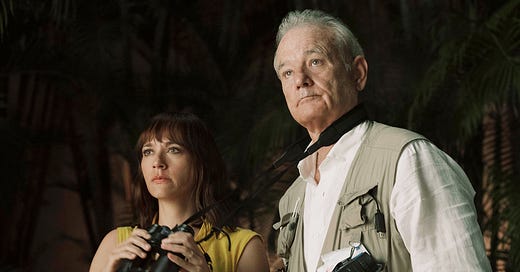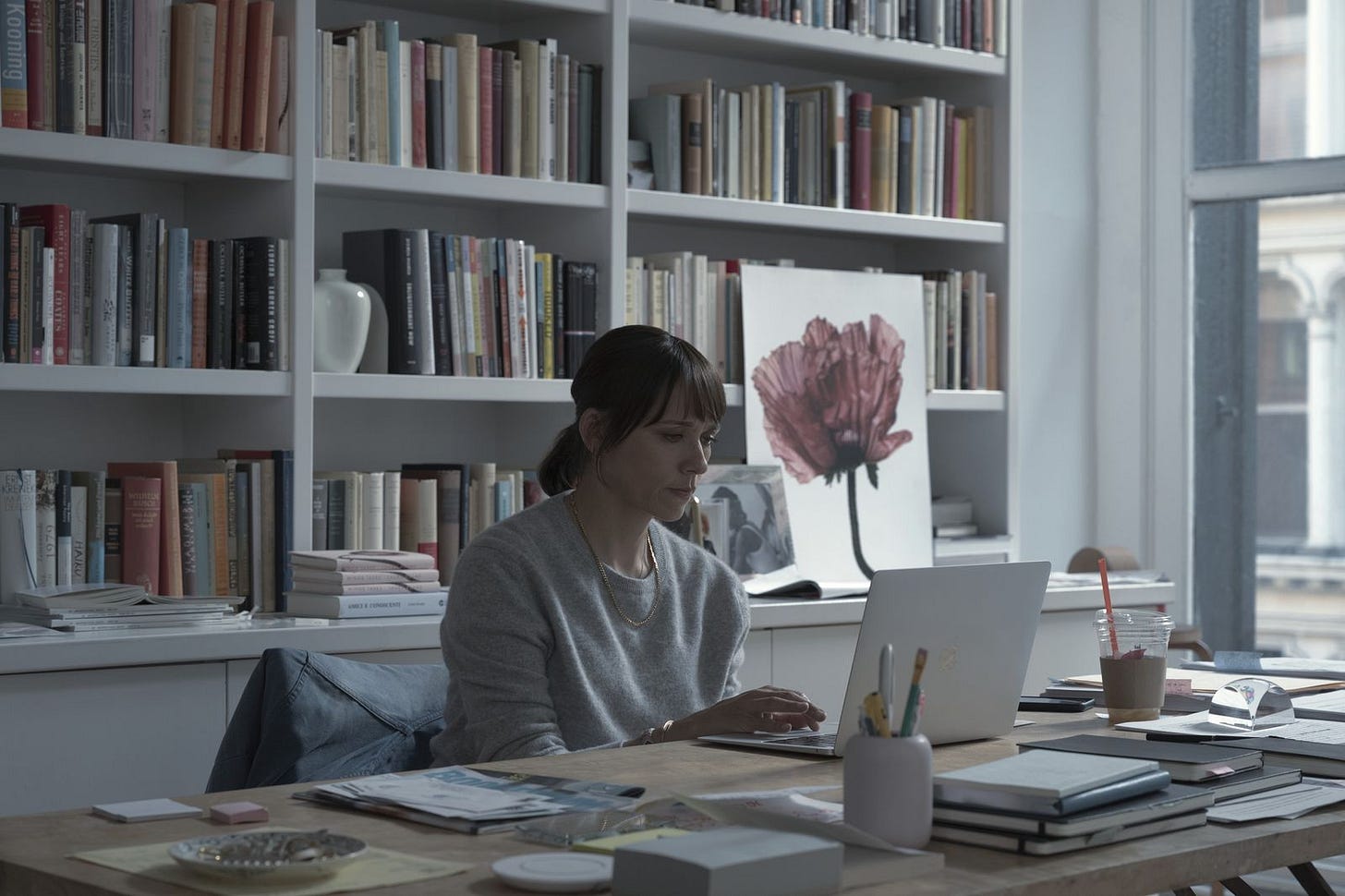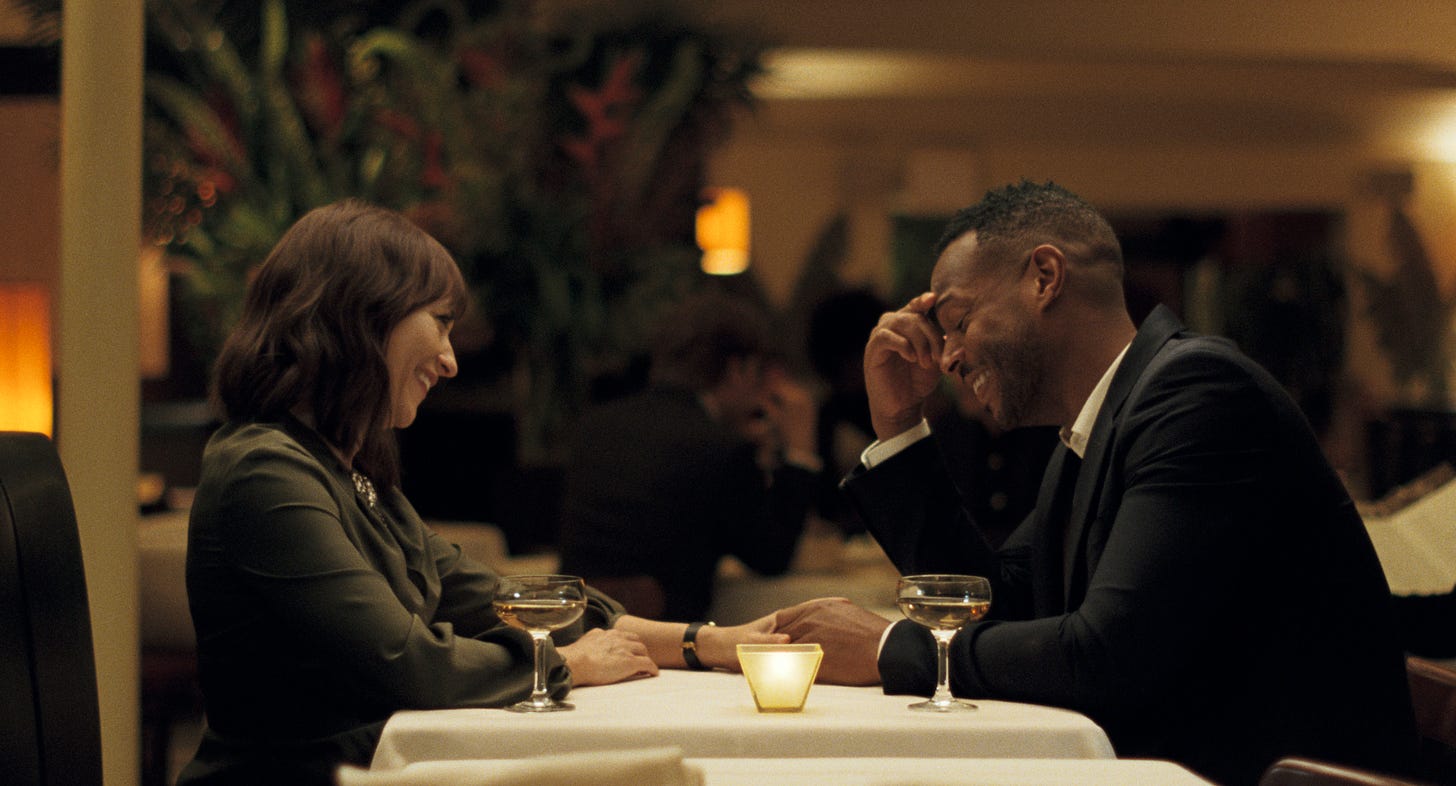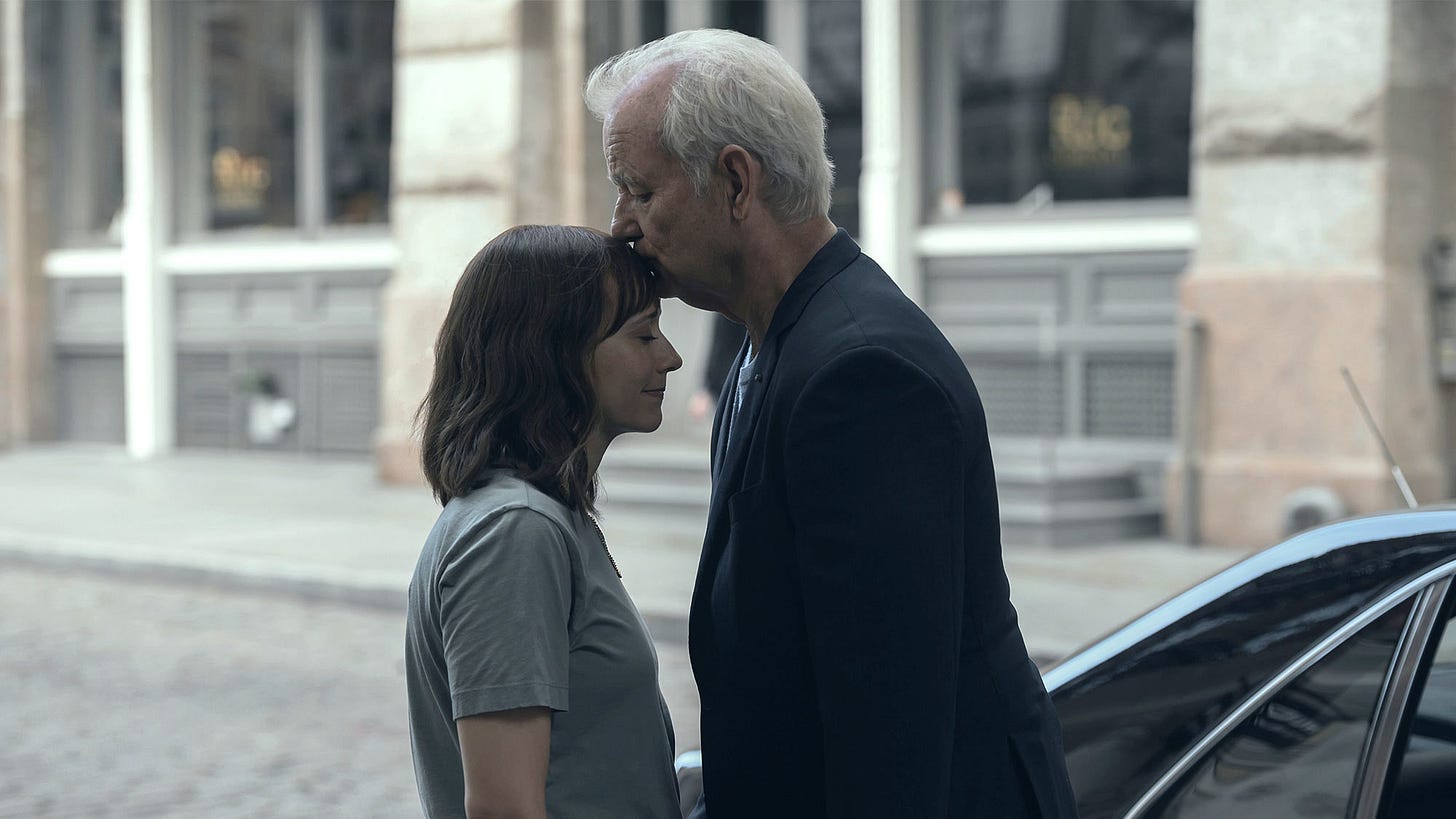I had that insane post a while back about the periods in prison I spent creating a fake Hollywood marketplace. One of the goals of this idealist filmmaking world was to have more opportunities for female filmmakers to helm bigger-budgeted films. At some point, I tried to pick projects for people like Sofia Coppola that could somehow be considered mainstream films but ones that didn’t compromise her own storytelling style.
This was based on her brief real-life dalliance with a “Little Mermaid” adaptation, one she briefly hoped to shoot underwater (hope she had James Cameron on speed-dial). It never came to fruition, and Coppola eventually retreated to the safe arms of Apple TV and financing from A24. Coppola is one of the more forceful cinematic voices of her era, but this movie is more of an aperitif, a slight snack in between Coppola efforts.
Rashida Jones and Marlon Wayans star as an upscale NYC couple juggling different responsibilities. As the homemaker, Jones watches the kids while struggling to assemble the pieces of her second novel. Wayans, handling the responsibilities of running a tech start-up, is the more glamorous of the two. While Jones is often dressed in mom-wear – comfortable pants, decorated with food stains – Wayans is handsomely outfitted in a suit and tie, ready to globe-trot for his job at any last minute.
Slowly, she begins to see the signs. A female travel bag in his suitcase. Erratic late-night amorousness. Sudden exotic trips, surrounded by attractive coworkers (particularly the enchanting Jessica Henwick). It’s time to investigate. And thus, “On The Rocks” settles into the vibe of a more conventional movie, the type that studios should be willing to make: a woman must find out, through hijinks, if her husband is being loyal.
Coppola, like any good filmmaker making what is essentially a genre film (I will not limit “genres” to fantastical boy-coded adventures), has an ace up her sleeve. Former “Lost In Translation” collaborator Bill Murray is here, and he is just about the warmest sweater you could wear. During Murray’s career, you sat with him in quiet moments, when pushy directors weren’t yet born but yesterday’s craftsmen and women could just let Murray’s hangdog face do the talking. As he’s aged, he’s largely moved away from bigger films, but even in gaudy crowdpleasers, it feels as if movies slow down to accommodate him. Let Bill Murray take you where you wanna go, and let him charm you.
“On The Rocks” thus primarily becomes a vehicle for Murray’s appeal. He pops up as Jones’ father, first on the periphery and then smack dab in the narrative. The tone is set by an old recording heard at the movie’s opening credits – that’s Murray’s voice informing his young daughter that she’s “mine” until she’s married, at which point she’s still “mine”. He is discussed as an old, troublesome rapscallion before he shows up and helps lead the investigation. Does he distrust Jones’ husband? Not necessarily. This is about a father wholly committing to his daughter’s happiness – in this case whether she wants it or not.
The troubling suggestion of that opening voicemail is something that Coppola enjoys exploring. She directed him in “Lost In Translation” over twenty years ago, where he plays something of a north star for a young woman. As he was sort of a romantic lead in the film, it’s not unexpected to see that Coppola is conflicted about his mentorship of her during her second film. Murray’s character is protective of his little girl, but he’s also a womanizer who objectifies the fairer sex. He certainly dates women his daughter’s age, something that is hand-waved away because this movie is more about the a-plot than any troubling subtext. But it’s an interesting wrinkle, and Murray knows which notes to play, and which to avoid.
The narrative eventually evolves into a travelogue where Jones learns new facts about her often-elusive father. She also, exasperatedly, sees how much easier his life is. Though she is ostensibly a popular author, she struggles like any other mortal navigating New York. Daddy Murray, though, is not unlike the real-life Murray – everyone seems to know him, and everyone’s happy to provide a favor. Yes, he’s a man out of time, and yes, he tells stories about women that produce winces of recognition and disgust from his daughter. He remains nonplussed, ready with a smirk and a pun. This is Bill Murray reminding you that movie stars are appealing because of how little it seems they try, and he’s a red star of charisma with each isolated line of dialogue he speaks.
This is basically a sitcom plot for 96 minutes, the kind of movie Greta Gerwig made a couple of times right after moving out of the mumblecore world. One of the movie’s few wasted efforts is Jenny Slate popping up as an oversharing fellow mom, a farcical bit repeated a few times that plays like a product of another older film. The pacing is slow and languorous – the better to allow Murray to be funny, but a choice that, matched with the film’s oppressive underlit shadows, gives off an uneasy vibe. Again, not a mainstream choice unless you just forced it down a mainstream audience’s throat – if you don’t force-feed the audience something unusual, they’ll request “Deadpool And Wolverine” every time out. I’d be lying if I said I didn’t expect, from the visuals alone, this would end in a horrible, depressing place. I assume Coppola is saving her downbeat endings for less mainstream-y fare.
It was weeks ago, but I’m still haunted by these ASMR videos released by the current administration. Horrible images, horrible implications – the government kidnapping men, women and children because they were not the right color. This is a fear tactic, since, statistically, Trump and company are too witless to actually surpass Joe Biden and Barack Obama’s deportation numbers by big-enough numbers. Dehumanization, all for the camera. Of course, the implication of all this theatricality is that the idea of people, specifically minorities, being arrested is relaxing. Why is that? If you had similar footage set against soft music, let’s say violence and harm, it wouldn’t be relaxing, because the idea of those people feeling pain would be too visceral. So why does this not affect people in the same way?
I was in prison in 2016, when Colin Kaepernick kneeled for the National Anthem. I knew he would earn support, and I knew that others would lambast him, speaking for the flag. What surprised me was hearing the sheer amount of people who claimed that, by kneeling for the flag, he was disrespecting the troops. Which was news to me – not once have I saluted the flag and thought of the armed forces, thought of the sometimes-necessary (and often unnecessary) violence required to protect the country. I just did not make the association – the American flag represents the American people, your neighbors, your friends, your local businesses and your county. It never represented men with guns. I guess I had it all wrong.
That reminds me of this current tomfoolery. Why is it relaxing to see people shackled up, mistreated? Because this isn’t about justice, it’s not about immigration or rights. It’s about how people like to see other people get punished, and specifically how white people find it reassuring to see people of color handcuffed. As a Latino, I just never knew it was this bad. Part of Make America Great Again also involved making it whiter, and that could only happen by no longer offering that olive branch. And so prison is just an extension of that – we call it correction, we call it rehabilitation. But there are huge swaths of people who know that criminalizing the weak, harming them – it feels good, it feels cathartic. The criminal justice system is currently being used to nakedly do what it previously did with modesty – hurt the vulnerable.









